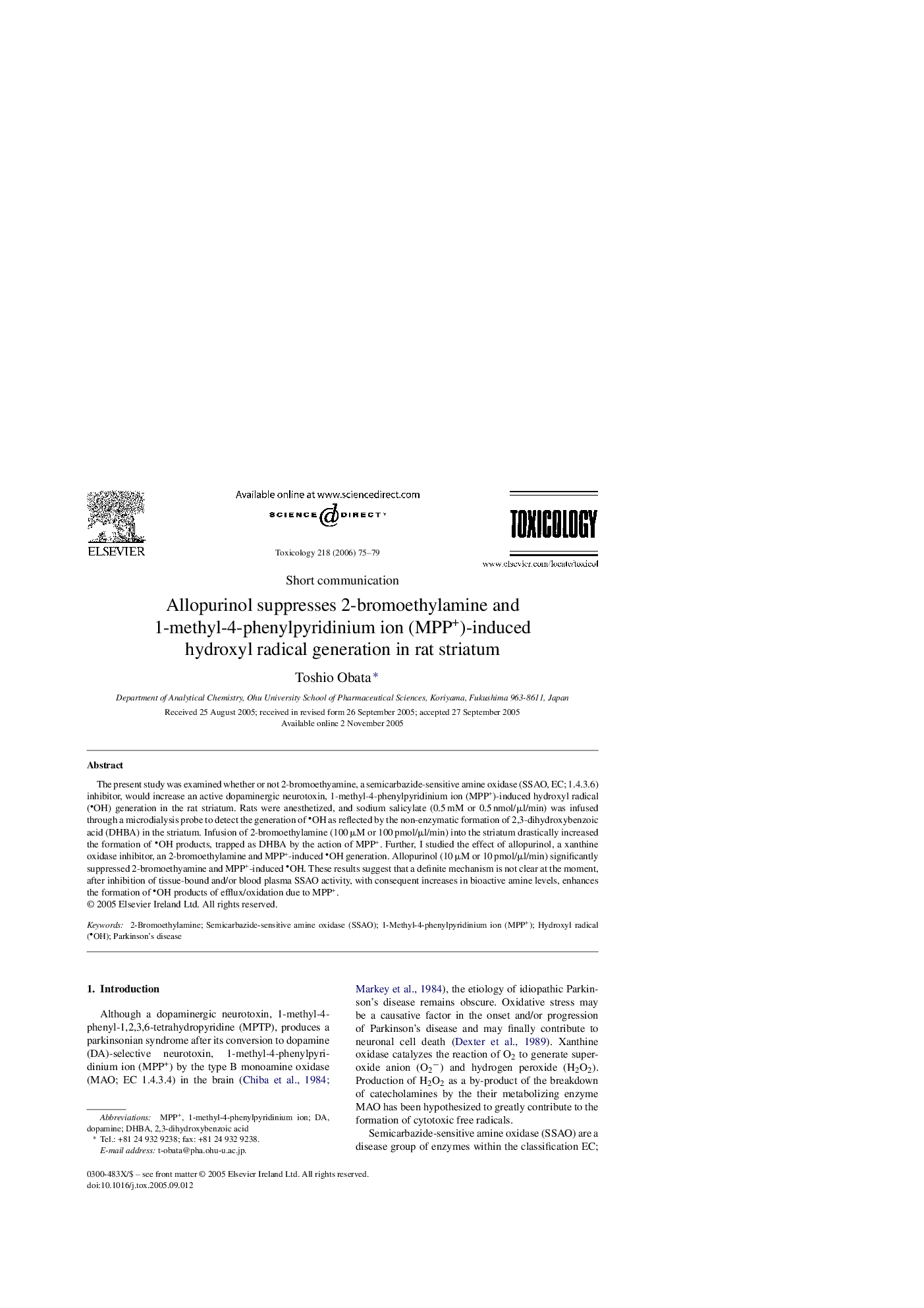| کد مقاله | کد نشریه | سال انتشار | مقاله انگلیسی | نسخه تمام متن |
|---|---|---|---|---|
| 2598326 | 1132643 | 2006 | 5 صفحه PDF | دانلود رایگان |

The present study was examined whether or not 2-bromoethyamine, a semicarbazide-sensitive amine oxidase (SSAO, EC; 1.4.3.6) inhibitor, would increase an active dopaminergic neurotoxin, 1-methyl-4-phenylpyridinium ion (MPP+)-induced hydroxyl radical (OH) generation in the rat striatum. Rats were anesthetized, and sodium salicylate (0.5 mM or 0.5 nmol/μl/min) was infused through a microdialysis probe to detect the generation of OH as reflected by the non-enzymatic formation of 2,3-dihydroxybenzoic acid (DHBA) in the striatum. Infusion of 2-bromoethylamine (100 μM or 100 pmol/μl/min) into the striatum drastically increased the formation of OH products, trapped as DHBA by the action of MPP+. Further, I studied the effect of allopurinol, a xanthine oxidase inhibitor, an 2-bromoethylamine and MPP+-induced OH generation. Allopurinol (10 μM or 10 pmol/μl/min) significantly suppressed 2-bromoethyamine and MPP+-induced OH. These results suggest that a definite mechanism is not clear at the moment, after inhibition of tissue-bound and/or blood plasma SSAO activity, with consequent increases in bioactive amine levels, enhances the formation of OH products of efflux/oxidation due to MPP+.
Journal: Toxicology - Volume 218, Issue 1, 20 January 2006, Pages 75–79